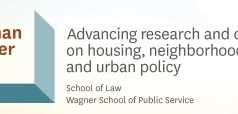New CAP Report: Case Studies Show a Mismatch Between Affordable Housing and Opportunity Neighborhoods
New report illustrates the need for policymakers to promote residential mobility while simultaneously reinvesting in high-poverty neighborhoods.
Washington, D.C. – December 17, 2015 – (RealEstateRama) — A new report from the Center for American Progress—released this morning at an event featuring U.S. Secretary of Housing and Urban Development Julián Castro—illustrates the frequent mismatch between affordable housing and opportunity. The report, “An Opportunity Agenda for Renters,” calls for policymakers to address this problem with a two-pronged approach that both promotes residential mobility and reduces poverty, while also reinvesting in racially segregated and economically impoverished neighborhoods. Such an approach will help transform these neighborhoods into healthy communities where residents have access to the basic building blocks of opportunity: high-quality housing, jobs, good schools, transportation, and health care.
“Research shows that moving children to more prosperous neighborhoods improves their life outcomes, but it is unrealistic to move every family currently living in underinvested areas. Further, being able to afford to live in a good neighborhood shouldn’t be tantamount to winning the lottery,” said Tracey Ross, Associate Director of the Poverty to Prosperity program at CAP. “We have to invest in high poverty communities while also increasing neighborhood choice for families.”
“A growing share of America’s families are paying so much in rent each month that they have little left to invest in their health, education, or long-term financial stability,” said Sarah Edelman, Director of Housing Policy at CAP. “In order for our communities to thrive, the right policies need to be in place to help ensure access to affordable rental housing.”
CAP’s report explores the divide between where low-income people can afford to live and where opportunities exist. Disinvestment, discrimination, and counter-productive public policy at all levels of government have created residential segregation and distressed, high-poverty communities across our country—but many Americans live in high-poverty areas because rents are more affordable there. At the same time, the United States is facing a rental affordability crisis: Half of all renters spend more than 30 percent of their income on housing, while 26 percent spend more than 50 percent of their income on housing—sharp increases over the last decade.
To illustrate this issue, CAP conducted three case studies to examine the distribution of for-rent vacant affordable units—defined as those that cost no more than 30 percent of income—by ZIP code for households that are at 80 percent of area median income, or AMI, in Cleveland, Los Angeles, and Houston. The authors compare distribution of these units with the distribution of an opportunity index that is based on the combination of the following indicators: high-wage jobs; short commuting times; access to supermarkets, fresh vegetable grocery stores, and financial institutions; low high-school drop-out rates; low poverty and unemployment rates; and low neighborhood transition rates. In these cities, CAP found a mismatch between affordable housing units and high-opportunity areas; affordable housing is mostly clustered around the very low-opportunity areas on the map, while more high-opportunity areas have few affordable housing units.
CAP’s report concludes with policy recommendations to promote residential mobility and reinvest in high-poverty communities. The recommendations include:
- Using tax policy to increase the supply of affordable rental housing;
- Eliminating restrictive and exclusionary zoning; and
- Funding the federal housing voucher program.
Click here to read “An Opportunity Agenda for Renters: The Case for Simultaneous Investments in Residential Mobility and Low-income Communities” by David Sanchez, Tracey Ross, and Julia Gordon, with Sarah Edelman, Michela Zonta, and Andrew Schwartz.
For more information or to speak to an expert, contact Allison Preiss at or 202.478.6331.
To speak with our experts on this topic, please contact:
Print: Liz Bartolomeo (poverty, health care)
202.481.8151 or ">
Print: Tom Caiazza (foreign policy, energy and environment, LGBT issues, gun-violence prevention)
202.481.7141 or ">
Print: Allison Preiss (economy, education)
202.478.6331 or ">
Print: Tanya Arditi (immigration, Progress 2050, race issues, demographics, criminal justice, Legal Progress)
202.741.6258 or ">
Print: Chelsea Kiene (women’s issues, TalkPoverty.org, faith)
202.478.5328 or ">
Print: Benton Strong (Center for American Progress Action Fund)
202.481.8142 or ">
Spanish-language and ethnic media: Jennifer Molina
202.796.9706 or ">
TV: Rachel Rosen
202.483.2675 or ">
Radio: Chelsea Kiene
202.478.5328 or ">
Contact: Allison Preiss
Phone: 202.478.6331
Email:















